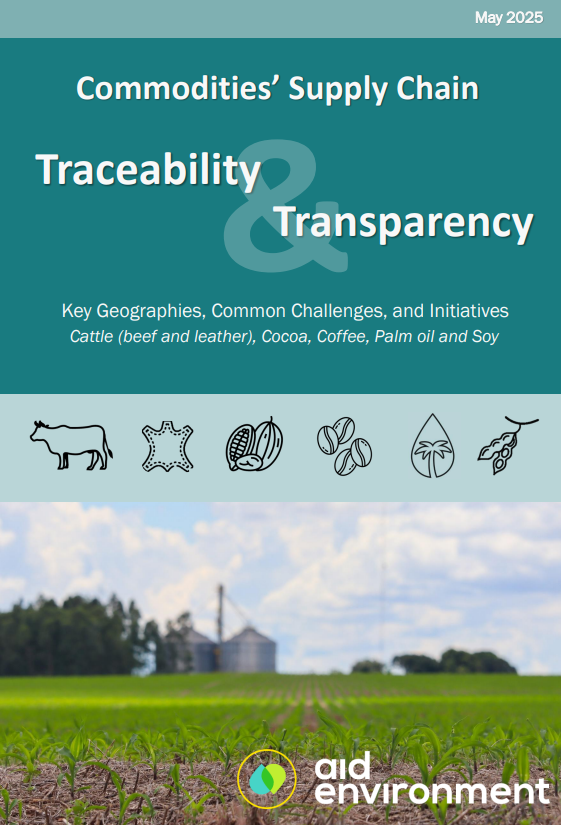Traceability & Transparency

As we get closer to the application date of the EU Deforestation Regulation (EUDR), it is critical to ensure an efficient implementation of the regulation, which is largely dependent on a sophisticated understanding of systemic sectoral risks, high-risk geographies, and resources or tools that can facilitate due diligence efforts and their scrutiny. This report constitutes an accessible source of information that can support knowledge and capacity building among relevant actors, such as EUDR Competent Authorities.
The report addresses current challenges and existing initiatives that can strengthen traceability and transparency in specific supply chains and jurisdictions, setting out from an overview and analysis of the main non-EU production areas and trade flows to the EU of relevant cattle (beef and leather), cocoa, coffee, palm oil, and soy products covered by EUDR.
Updated on May 19, 2025
Key takeaways:
(1) Trade data shows that the EU’s deforestation footprint embodied in imported products is concentrated in specific supply chains from high deforestation-risk jurisdictions: chilled beef from Argentina and Brazil; tanned or crust hides from Brazil, cocoa beans from Cote d’Ivoire and Ghana; coffee from Brazil and Vietnam; palm oil and fractions from Indonesia, Malaysia and Honduras; and soy meal and oilcake from Brazil and Argentina.
(2) These supply chains and countries should currently be prioritised by EUDR competent authorities for checks and monitoring while tracking trade flow changes, as a consequence of EUDR implementation, is essential to adjust monitoring priorities timely.
(3) While there are examples of supply chain traceability schemes in all EUDR commodity sectors, significant gaps remain due to lack of chain of custody controls at the production- and consumption-end of the supply chain, particularly in complex supply chains involving multiple actors in producing, transporting, aggregating, processing, and selling relevant commodities or products.
(4) Weak supply chain integrity, self-regulation, lack of binding sustainability standards and poor law enforcement increase the risk of product laundering – mixing illegally-produced goods into legal products and supply chains.
(5) Despite challenges, there is a growing abundance of publicly available data documenting various aspects of commodity production, deforestation, trade, and compliance that can help assess related risks in specific production and consumption areas.
